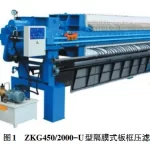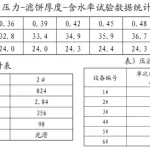Filter press feed pump is a kind of special pump widely used in filter press system, and its main function is to provide continuous and stable feed pressure and flow for the filter press to ensure the smooth progress of the filter press process. This article will discuss in detail the types, characteristics and selection principles of filter press feed pump.
I. Types and characteristics of filter press feed pumps
1. Centrifugal pumps
Centrifugal pumps are pumps that use the centrifugal force generated by the rotation of the impeller to transport liquids. Centrifugal pumps are commonly used as feed pumps in filter press systems with the following characteristics:
(1) Simple structure, easy to operate and maintain;
(2) Stable flow and head with low pressure fluctuations;
(3) Adapt to transport a variety of different properties of the liquid, insensitive to impurities;
(4) High efficiency, energy saving and lower operating costs.
2. Piston pumps
A plunger pump is a type of pump that uses the reciprocating motion of a plunger in a cylinder to transfer liquid. In filter press systems, plunger pumps are commonly used as feed pumps with the following characteristics:
(1) High pressure and high flow rate, suitable for high pressure and high flow rate filter press system;
(2) Good sealing performance and high purity of conveyed liquid;
(3) Stable flow rate and pressure with a wide range of adjustability;
(4) Compact structure and easy maintenance.
3. Diaphragm pumps
A diaphragm pump is a type of pump that uses the reciprocating deformation of diaphragms to transfer liquids. In filter press systems, diaphragm pumps are commonly used as feed pumps with the following characteristics:
(1) It is suitable for conveying liquids with high viscosity and containing more particles;
(2) It has good self-absorption ability and can directly transport liquids that do not contain gas;
(3) The diaphragm has good corrosion and abrasion resistance and is suitable for conveying various corrosive liquids.
Second, the selection of filter press feed pump principles
1. According to the process requirements of the filter press system to choose the right type of pump. For example, diaphragm pumps can be used for liquids that need to be transported with high viscosity and contain more particles; piston pumps or centrifugal pumps can be used for liquids that need to be transported with high purity and stable flow and pressure.
2. Consider how well the flow and head of the pump matches the filter press system. Select the appropriate pump type and size to ensure that the feed pump will provide sufficient flow and head to meet the needs of the filter press. Pump efficiency and energy consumption also need to be considered to reduce operating costs.
3. Consider pump reliability and stability. Filter press systems usually require continuous and stable operation, so it is crucial to select a feed pump with reliable quality and stable performance. Regular brands and reputable suppliers should be selected to ensure pump quality and after-sales service.
4. Consider ease of installation and maintenance. When selecting a feed pump, factors such as its installation size, weight and structural features should be considered to facilitate installation and fixing. Consideration should also be given to the ease of maintenance and servicing of the pump in order to help extend the life of the pump and reduce maintenance costs.
5. Principle of economy. Under the premise of meeting process requirements, cost-effective feed pumps should be selected to reduce the investment cost of the entire filter press system. It is also necessary to consider the operating costs in order to select energy-saving, environmentally friendly pump type.
Filter press feed pumps belong to a kind of special-purpose pumps, whose types and characteristics vary according to different application requirements. When selecting feed pumps, several factors such as process requirements, flow and head, reliability, installation and maintenance, and economy should be considered to ensure the normal operation of the filter press system and reduce investment costs. With the continuous progress and development of technology, more new feed pumps will emerge in the future, providing more possibilities for the optimisation and development of the filter press system.
 Plate and frame chamber diaphragm filter presses
Plate and frame chamber diaphragm filter presses






